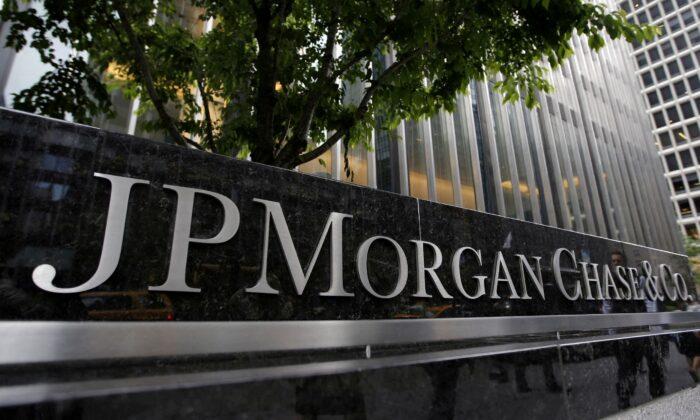JPMorgan Chase & Co. posted fourth-quarter profit ahead of market expectations on Friday, but its shares fell as much as 6 percent as analysts expressed disappointment over its forecasts for future profitability.
The country’s largest bank warned that its return on tangible capital equity (ROTCE), a key metric which measures how well a bank uses shareholder money to produce profit, may fall below its medium-term target of 17 percent this year.
A slowdown in capital markets activity, the cost of investing in the business, including new technology and branch openings, and rising expenses due in part to higher inflation and labor costs, were some of the factors the bank cited as headwinds in the coming year.
However, it retained a medium-term target for 17 percent ROTCE beyond 2022, saying it expected to benefit from rising interest rates and the longer-term growth of businesses resulting from its investments.
That guidance disappointed some analysts and investors. Shares in JPMorgan, which had enjoyed a strong run leading up to the results, were down 5 percent in mid-morning trading, the biggest faller among U.S. banking stocks.
The bank reported a 14 percent drop in fourth quarter profit compared with a year ago, reflecting a decline in trading revenues. The previous year had benefited from increased trading activity, as the Federal Reserve’s stimulus measures produced more liquidity in equity and fixed income markets.
The Fed began scaling back its asset purchases in November 2021, resulting in lower trading volumes.
Markets revenues fell by 11 percent during the quarter. Fixed income markets revenue was down 16 percent with equity markets revenue 2 percent lower.
That slowdown was only partially offset by a stellar performance at JPMorgan’s investment bank, where revenue rose 28 percent and a 6 percent increase in loan growth across the firm.
Over the past year, large U.S. lenders benefited from higher consumer spending and a surge in deal-making driven by loose monetary policy, while their trading arms gained from exceptional volatility in financial markets.
However, soaring inflation, a potential Omicron-induced economic slowdown and trading revenues returning to normal levels are set to challenge the banking industry’s growth in the coming months.
JPMorgan’s Chief Executive Jamie Dimon and Chief Financial Officer Jeremy Barnum faced tough questions from analysts on a conference call after the results.
Wells Fargo analyst Mike Mayo expressed frustration that the bank was unable to achieve its ROTCE target this year and over the length of time it will take for investments to feed through to the bottom line.
“You’re saying we have to wait two years for the 17 percent ROTCE despite the booming economy,” Mayo said. “You’re in there for the long term but a lot of investors aren’t planning to invest for a 10-year horizon.”
Expenses Spiral
Analysts also expressed concern about spiraling expenses.During the quarter, non-interest expense jumped 11 percent to nearly $18 billion, driven largely by higher staff compensation.
Banks are facing cutthroat competition to hire and are being forced to pay more to recruit and keep talent.
“We want to be very, very competitive on pay,” Dimon said. “If that squeezes margins so be it.”
During the quarter, JPMorgan maintained its position as the second-biggest provider of worldwide M&A advisory after Goldman Sachs, according to Refinitiv. The league tables rank financial services firms by the amount of M&A fees they generate.
Barnum said JPMorgan expects a “modest normalization” in investment banking revenue in 2022, but added that the overall deals pipeline remains healthy.
On the slowdown in trading, Barnum said the bank expects some normalization this year but still expects revenue to remain above 2019 levels.
Overall, the lender posted a profit of $10.4 billion, or $3.33 per share, in the quarter ended Dec. 31. Analysts had estimated $3.01 per share, according to Refinitiv data.






Friends Read Free